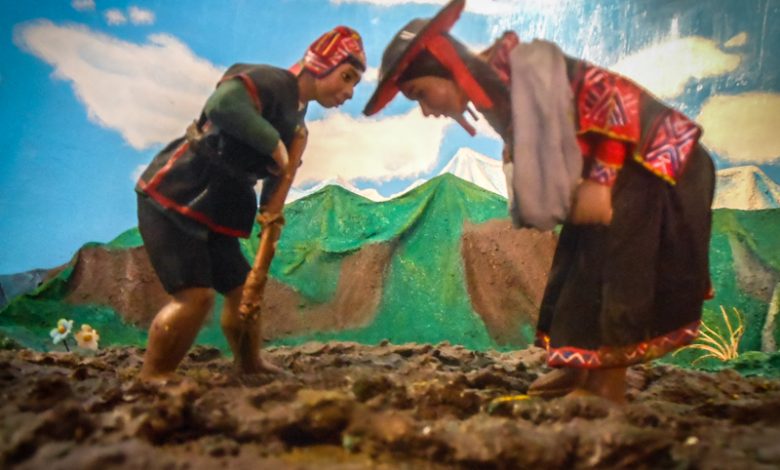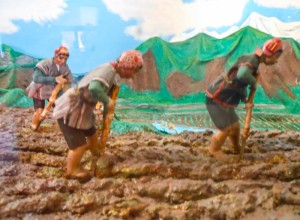The Andean Footplow–Chakit’aqlla–Opens the Earth for Planting

Most agricultural work in Cuzco still follows our ancestral traditions. For example in the case of planting corn people still rely on reciprocal labor, ayni (helping each other) as well as using the traditional foot plow, the chakit’aqlla (also spelled chaquitaclla). Although increasingly tractors and mechanical planters are making appearances, especially where the land is flat in the river bottoms, the ch’akitaqlla continues unchallenged on the hillsides and in traditional communities.
The Incas were agricultural experts. For every ecological zone they developed a strategy that allowed them to gain the best advantage. The ch’aquitaqlla was very important for their work
The chakit’aqlla is also called t’aqlla. Chaquí means foot. In Spanish it is often called arado de pie, or foot plow. It can also be compared to a shovel or digging stick. It was perhaps the most important tool for working the land that existed in the Andean world. It could be made from the wood of indigenous trees such as Cachacomo, Huarango, Queuña y Quishwar.
To make it, people obtained a thick stick of variable length. The different sizes were chosen according tot he strength and physical ability of the people. To the stick people attached a slightly curved and sharpened point of metal or stone. Then they added a transverse attachment for a foot to push the plow down into the ground. This is attached with raw cowhide that, as it dries and shrinks, makes a very tight joint.

The chaquit’aqlla was thrust into the ground and then, using leverage, the stick was pulled back, opening the earth for the woman to place seed into the ground. Work in the countryside is always shared. To finish, this tool also has a sleeve on the upper third of the stick so that the stick can be held with the hands without slippage.

This tool is adaptable to the geographic relief. It can be used on flat places, such as terraces, or sloped fields where agricultural machines cannot make their way. It is easy to use and easily transported.
Those who make this marvelous tool are the farmers who use it, although they rely on a blacksmith for help with the metal point.
Before going out to work in the fields, the workers must be well nourished. They begin their labors by chewing the sacred coca leaves and drink some of the sacred drink of the Incas, chicha—a kind of corn beer. They always share these with the Pachamama, the mother earth, so that with the support of and in harmony with the Apus–the mountain deities, they can begin their work.
Besides in the fields, you can see chakit’aqllas in ceramic representations of agricultural scenes in Cuzco’s museums.




